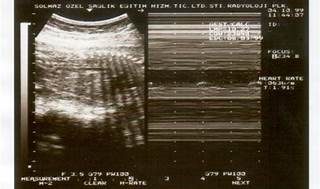A nurse is assisting with the care of a client who is in labor. Immediately after the delivery of a newborn, which of the following actions should the nurse take first?
Confirm identification and apply a bracelet.
Examine the newborn for birth defects.
Dry the newborn.
Conduct a gestational age assessment.
The Correct Answer is C
The correct answer is choice c. Dry the newborn.
Choice A rationale:
Confirming identification and applying a bracelet is important for ensuring the newborn’s identity and preventing mix-ups, but it is not the immediate priority right after birth.
Choice B rationale:
Examining the newborn for birth defects is crucial for identifying any immediate health concerns, but it should be done after initial stabilization measures like drying and warming the newborn.
Choice C rationale:
Drying the newborn is the first action the nurse should take immediately after delivery. This helps to prevent heat loss and maintain the newborn’s body temperature, which is critical for their survival and well-being.
Choice D rationale:
Conducting a gestational age assessment is important for determining the newborn’s maturity and potential health risks, but it is not the immediate priority right after birth.
Nursing Test Bank
Naxlex Comprehensive Predictor Exams
Related Questions
Correct Answer is C
Explanation
Choice C rationale:
This response is correct because black stools are a common side effect of taking iron supplements. Iron can cause the stool to appear black or
tarry due to the way it is broken down during digestion. It does not necessarily indicate a serious issue, especially if the client is not experiencing any abdominal pain or cramping. Educating the client about this expected side effect helps alleviate any concerns they might have about the change in stool colour.
Choice A rationale:
"Go to the emergency room and your provider will meet you there.”. This response is not appropriate in this situation. The client's report of black stools without abdominal pain or cramping is likely due to the iron supplements and does not warrant a visit to the emergency room. This response may cause unnecessary panic and anxiety for the client.
Choice B rationale:
"What else have you been eating?.”. This response is also not the best choice. While it's essential for healthcare providers to gather comprehensive information about a client's diet and lifestyle, in this case, the client's black stools can be directly attributed to the iron supplements. Focusing on other dietary factors might distract from addressing the client's concern about the side effect of iron supplementation.
Choice D rationale:
"Come to the office, and we will check things out.”. This response is not the most appropriate one either. A visit to the office might not be necessary solely based on the client's report of black stools without accompanying pain or cramping. This situation can be managed through education, and the client can be reassured that it is a typical side effect of iron supplements. An unnecessary visit to the office could inconvenience the client and waste both their time and the healthcare provider's time.
Correct Answer is B
Explanation

The correct answer is choice B. Assure the client that the score is within the expected range.
Choice A rationale:
Administering oxygen and notifying the provider is not necessary for a biophysical profile (BPP) score of 10. A score of 10 indicates that the fetus is well-oxygenated and there are no signs of distress.
Choice B rationale:
A BPP score of 10 is considered normal and reassuring, indicating that the fetus is well-oxygenated and there are no signs of distress. Therefore, the nurse should assure the client that the score is within the expected range.
Choice C rationale:
Offering the client orange juice and repeating the assessment in 1 hour is not necessary for a BPP score of 10. This action might be considered if the score were lower and there was a need to reassess fetal well-being.
Choice D rationale:
Assisting the client into a side-lying position is not required for a BPP score of 10. This position is typically recommended to improve uteroplacental blood flow in cases of fetal distress or lower BPP scores.
Whether you are a student looking to ace your exams or a practicing nurse seeking to enhance your expertise , our nursing education contents will empower you with the confidence and competence to make a difference in the lives of patients and become a respected leader in the healthcare field.
Visit Naxlex, invest in your future and unlock endless possibilities with our unparalleled nursing education contents today
Report Wrong Answer on the Current Question
Do you disagree with the answer? If yes, what is your expected answer? Explain.
Kindly be descriptive with the issue you are facing.
